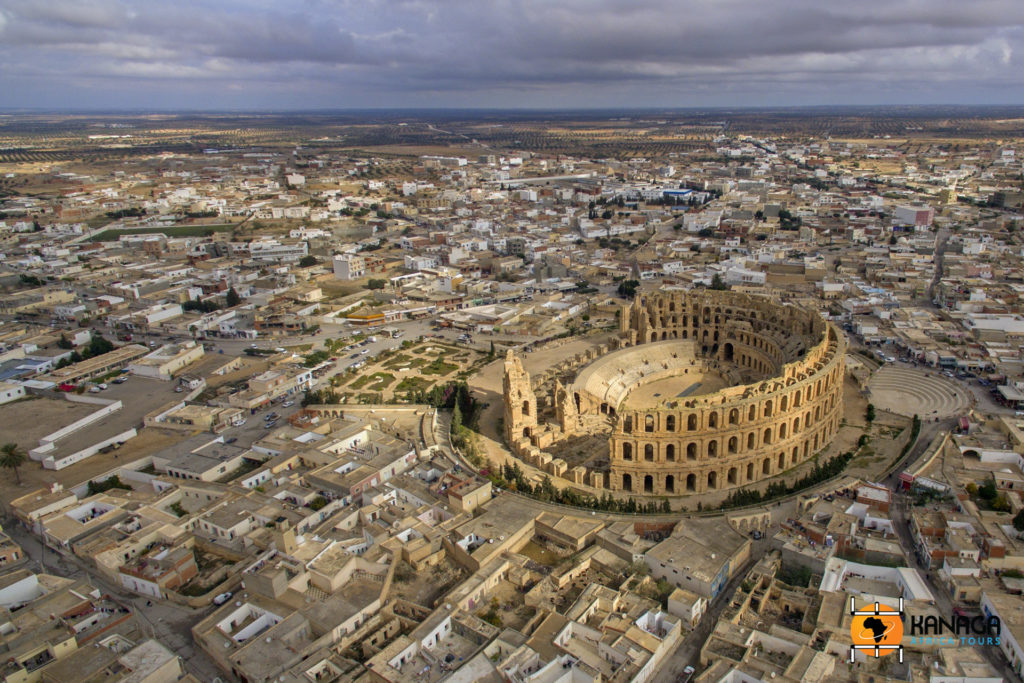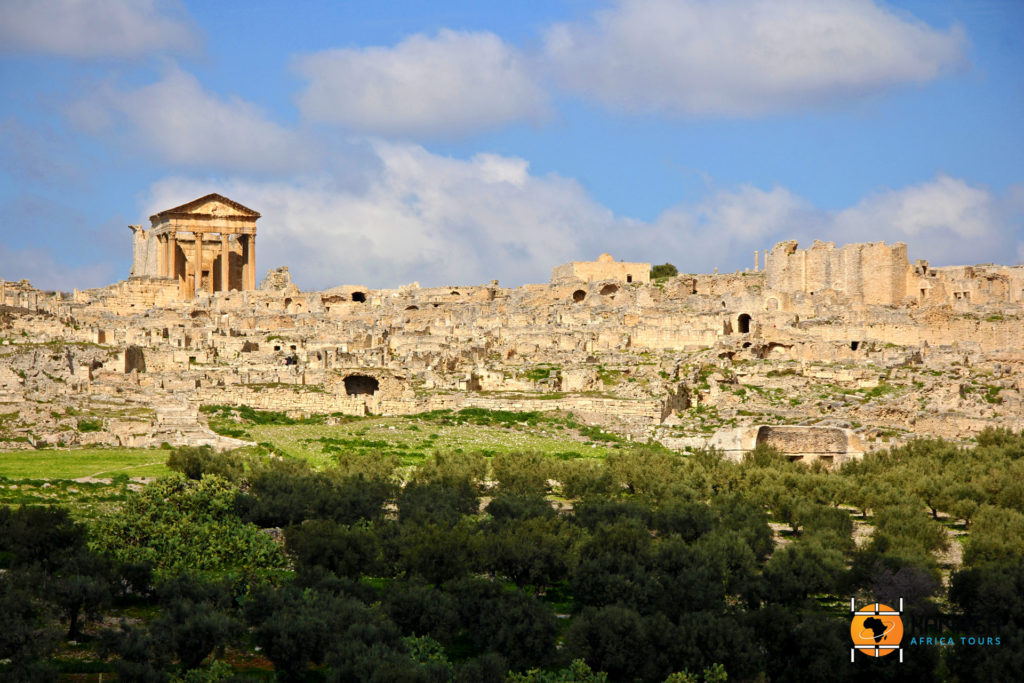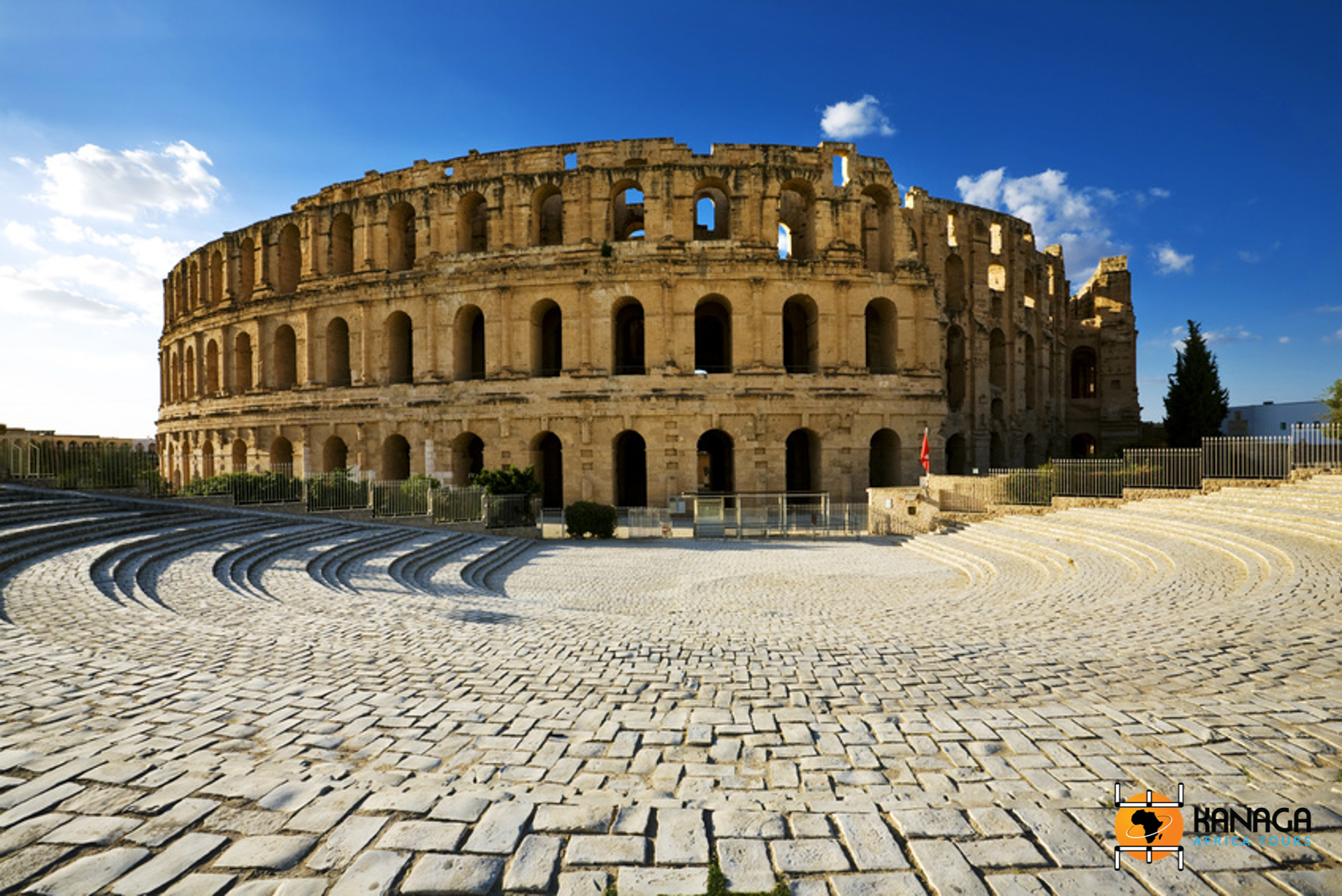Once a flourishing province of the Roman Empire, Tunisia today recalls its past through the spectacular vestiges found in numerous sites throughout its territory. The archaeological sites of Carthage, Dougga, Sbeitla or Sufetula, Thuburbus Maius and El Jem, with its great amphitheatre, stand out for their beauty, state of preservation, originality or exceptional size.
Carthage, founded by the Phoenicians in 814 BC, was one of the most powerful metropolises of antiquity, capital of a province whose borders extended as far as Sardinia and Spain.
Long rivals of the Greeks, the Carthaginians, also known as Punic or Phoenicians, were excellent navigators, traders and expert farmers. But despite the important battle victories of General Hannibal, in 146 BC the Romans conquered Carthage and made it one of the most sumptuous cities of their empire, so much so that in imperial times it had more than 300,000 inhabitants and was considered the third largest city after Rome and Alexandria.
The preserved remains in the archaeological site of Carthage (UNESCO World Heritage Site) and its museum allow us to imagine the sumptuousness of the ancient city and bring it back to life: water tanks with a capacity of millions of litres, a forum and monuments of exceptional dimensions, luxurious villas, votive statues in terracotta and glass paste and sarcophagi reminiscent of oriental cults; masks, jewellery and amulets charged with powerful symbolism. There are also entire residential quarters, the Baths of Antonine complex, one of the largest in the entire empire after those of Caracalla and Diocletian in Rome, and finally the remains of the extraordinary Port, made up of two communicating basins and considered in antiquity to be an authentic masterpiece of engineering.
In the heart of a fertile plain where once (and still today) cereals, oil and wine were produced, stands Thuburbus Majus, which was a Berber settlement, then a Phoenician one and finally, from 27 BC, a prosperous Roman colony. Partially destroyed by the Vandals in the 5th century, it was definitively abandoned after the Arab invasion, and it was only at the beginning of the 20th century that this site was rediscovered and subjected to major archaeological excavations, which brought to light numerous temples, the remains of patrician villas, a large Forum, baths in summer and winter, the Capitol and the interesting Palestra dei Petronii with its long colonnade.
A hundred kilometres south-west of Tunis is the archaeological site (UNESCO World Heritage Site) of the ancient Roman city of Dougga. 25 hectares of temples, dwellings, theatres and baths linked by a maze of paved streets leading to the city’s real jewel: the spectacular amphitheatre, with a capacity of 3,500 spectators. Also noteworthy are the Capitol, dedicated to the triad Jupiter, Juno and Minerva, the Wind square, with its extraordinary mosaic flooring, the Forum, the Baths of Licinius and the large esplanade where the Temple of Caelestis, dedicated to Juno, once stood.
The ancient Roman city of Sufetula, or Sbeitla, stood on what is now an arid and barren plateau, but in the 1st and 2nd centuries AD was a fertile plateau covered with forests and olive groves. Of this city situated on the edge of the Roman Empire, facing the lands of the Berbers, vestiges of great wealth remain today. The site of Sbeitla is notable for its Capitol, made up of not one but three side-by-side and communicating temples, practically intact, dedicated to Minerva, Jupiter and Juno, the patron gods of Rome. The scenery of the Forum, accessed through a monumental arch, the theatre, the great baths and the small museum at the entrance to the archaeological area with objects found on the site and some mosaics, is memorable.
Near Monastir, don’t miss the great Roman amphitheatre of El Jem, the ‘coliseum of Africa’, built around 230 AD on the model of the one in Rome. The sixth largest after Rome, Capua, Pozzuoli, Verona and Carthage, it is 150 metres long, 124 metres wide and 36 metres high and could hold up to 35,000 spectators, who gathered here to watch the gladiator shows.
While today El Jem is a quiet town in the Tunisian hinterland, two thousand years ago it was a splendid ‘urbe’, one of the most important in the Roman province of Africa, especially rich in oil production. As evidence of this wealth, in addition to the exceptional amphitheatre, there are interesting exhibits in the archaeological museum and the Maison d‘Afrique, a completely reconstructed Roman villa with spectacular mosaics depicting scenes of hunting and daily life.







